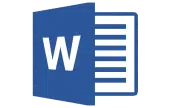Nowadays, sending emails is an unavoidable part of most business relationships.
In fact, the average American worker receives around 126 emails per day.
Knowing how to write a clear, conscience, and professional email can help you to succeed in the workplace.
While many people treat email closings as an afterthought, they’re often one of the most important parts of a message.
Your sign-off is the last thing a boss, colleague, or client will see before responding.
You want to make sure that you leave a positive impression.
Here, we’re going to go over how to end an email on a professional note, whether you’re in a friendly or formal setting.
The Importance of Properly Ending an Email
With a proper ending to your email, you’ll be more likely to see positive results.
If you’re asking the recipient to do something, a polite call to action will motivate them to get started.
You can also leave your contact information to establish a back-and-forth dialogue.
At the very least, closing out an email with a professional signoff will get you noticed.
A recipient is more likely to remember a polite and well-constructed email.
What’s more, they’re more likely to respond positively and take action.
Whether you’re sending an email from your work computer or your iPhone, you should always close with something polite and professional.
An email signoff is much like the end of a conversation, and it can leave the other party with a lasting impact.
Just like when meeting someone face-to-face, it’s important that you make a good first impression.
Tips for Ending Emails
While there’s no single solution for a well-crafted sign-off, there are some things you can do to end your email on a positive note.
Be Concise
While it’s important to include all pertinent information in a professional email, you should also keep things brisk.
A lengthy email wastes time for everybody involved.
If your email is too long, it may go unread.
Your recipient may also accidentally miss important points as they read.
At the very least, it’s sure to irritate colleagues and clients who are looking for quick and efficient communication.
Always keep things as clear and concise as possible when closing out your email.
Only include relevant information and leave out any fluff or flowery language.
You may even want to resort to bullet points when providing contact information.
Check Spelling and Grammar
While a small spelling mistake may seem like no big deal, it looks unprofessional in business communications.
Your recipient may assume that you didn’t take the time to revise your email before sending it.
Spelling and grammar can make an otherwise professional email seem hurried or sloppy.
If you want to show your recipient that you’re invested in the conversation, you should spend a few minutes revising every email before hitting send.
If editing isn’t your strong suit, you can find apps and software that will do the job for you.
A quick run through your chosen spell checker can save you from future embarrassment by pointing out typos you may have otherwise missed.
Use a Template
You can save time signing off on professional emails by making a template to use during communications.
You can alter your base template to suit the given conversation.
For some people, it might be best to have a variety of different templates for different circumstances.
An email signature template includes essential signoff information such as your name and contact information.
You can add this type of template to your closing message each time to ensure that you don’t forget to include any critical information in your email.
What to Include in an Email Closing
When closing out a professional email, you should always ensure that the recipient knows how to get back to you.
There are a few vital pieces of information that you should always be sure to include in your signoff.
First and Last Name
The first thing to include in any email signoff is your full name.
It should be easy for the recipient to tell at a glance who is sending an email.
Even if your name is attached to your email handle or cover letter, you should make sure to repeat it in your email closing.
It’s usually best to avoid using informal names when sending a professional email.
You should only include nicknames if that’s how others in your company identify you.
Company Information
Whether you’re self-employed or working for a large corporation, you should include information such as your company’s name and your official job title.
If you’re dealing with a client, you may want to add your business’s mission statement or motto to your signoff statement.
Doing so can give outsiders a better idea of your company’s core goals and values and forge a sense of camaraderie.
Contact Information
When sending a professional email, you must ensure that the recipient knows how to get in touch with you.
One of the biggest mistakes you can make when emailing a client or colleague is to forget your contact information in your signoff.
Always include your email address in the body of your closing statement, even if the recipient can already see it in their inbox.
You should also add your phone number and extension in case the recipient prefers speaking to emailing.
If social media is an important part of your professional life, you may want to link to important profiles.
These days, many professionals use their LinkedIn page to communicate with coworkers, clients, and more.
Call to Action
If you want your recipient to take action, you should include it in your closing line.
Whether you’re asking for reports or simply want a callback, it’s a good idea to say so in your email.
A call to action (CTA) makes it more likely that a recipient will follow up after relieving an email.
Including just a single CTA in your email can increase clicks by up to 371%.
If you’re worried about forgetting to include critical information, you may want to use an email signature template.
This will automatically add your chosen contact information to the end of every email you send.
How to End an Email
The ending that you choose for your email will depend primarily on the recipient.
No matter what the situation, you want to ensure that you present yourself as polite and professional.
Formal Business Settings
If you’re emailing a professional contact, you’ll usually want to stick to formal language.
This is especially true if you’re unfamiliar with the recipient or if the two of you are speaking for the first time.
A formal sign-off should be warm and polite, yet not overly familiar.
This includes any salutation such as Best Regards or Kind Regards.
Sincerely and Respectfully Yours are also safe bets that work well in just about any corporate setting.
Friendly Business Settings
When you have a friendly rapport with a client or colleague, you can get away with sounding a bit more casual in your business letters.
In fact, a little bit of informality can go a long way towards forging friendly professional relationships.
A semi-professional closing should still be as concise and polite as in a formal email.
However, you can add a little bit more warmth with signoffs such as Yours truly and Best wishes.
If you’re emailing someone you see frequently in your day-to-day life, you can close with a sign-off such as See you around or See you soon.
Thanks and Appreciation
Expressing gratitude is one of the best ways to ensure a positive response from your recipient.
Simply adding Thank you or Thanks in advance can drastically improve email response rates when sending a professional email.
Email Signoffs to Avoid
In a professional setting, there are plenty of signoffs to avoid if you don’t want to cause a stir.
Even with friendly faces, it’s best not to err on the side of overly informal.
As a rule of thumb, don’t close your business email with any greeting that you’d use for a close friend, family member, or significant other.
Signoffs that show affection, such as love, hugs and kisses, or even XOXO, look highly unprofessional in a business setting.
You should also avoid any text-style signoffs that could be confused for typos.
This includes any salutation such as Thx, Ty, KK, and more.
It’s also best to exclude emojis and emoticons.
Examples of How to End an Email
It’s not always easy to write a top-notch signoff to your email.
One of the best ways to learn is by looking at examples.
Here, we’re going to go over some different ways to end a professional email.
Responding to a Request
[su_note note_color=”#E5E5E5″]
Thank you for reaching out to me. I will take care of this as soon as possible.
Please let me know if there’s anything else I can do.
Best Regards,
John Doe
Head of Team, Company A
123-456-7890
[/su_note]
Scheduling a Meeting
[su_note note_color=”#E5E5E5″]
Thank you for your time. I look forward to meeting with you next Monday.
Respectfully,
J. Doe
Head of Team, Company B
123-456-7890
[/su_note]
Applying for a Job
[su_note note_color=”#E5E5E5″]
Thank you for taking the time to meet with me today.
I look forward to hearing from you about the next steps in the process.
Sincerely,
Jane Doe
Experienced Professional
123-456-7890
[/su_note]
Conclusion
When writing an email, the closing lines can be just as important as the body.
By knowing how to end an email, you can impress colleagues and improve your professional relationships.
You’re sure to leave a lasting positive impression with a concise, polite, and professional end to your email.










